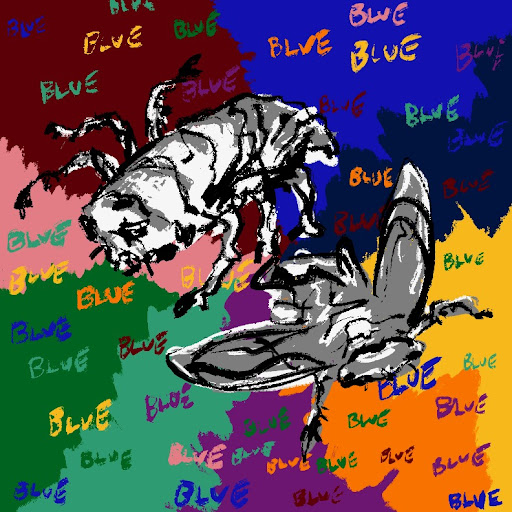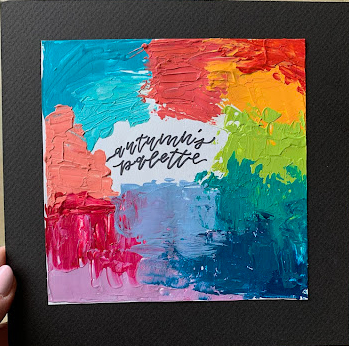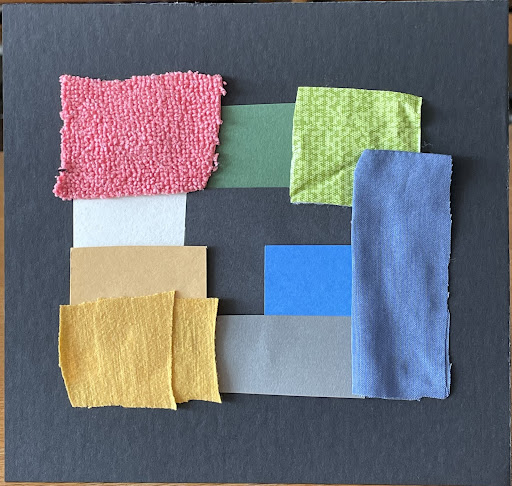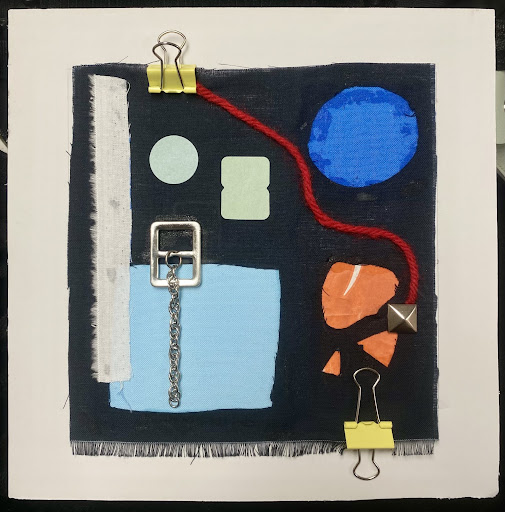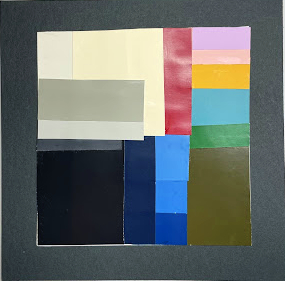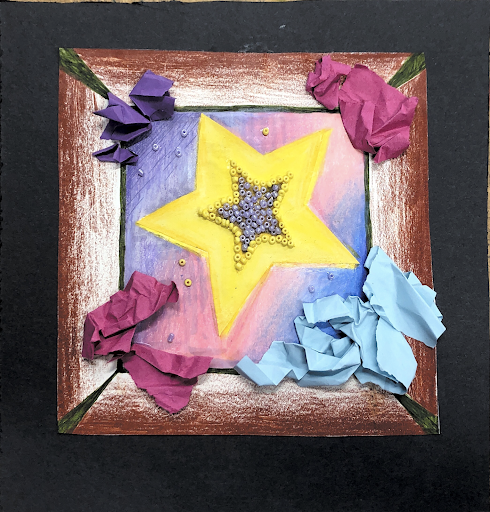Select your colors.
You might tear some scraps of paper or fabric to use as handy color swatches. You might use colored pencil or some other medium to play around with combinations. Whatever color medium you use, give yourself colors to look at — let your eyes help you decide. Don't pick what you think you like, pick what you keep coming back to.Pick 6-12 colors.
Prep a board
Trace a 6" square on an 8"x8" board — find a nice scrap of foam core or presentation board.Collect Color Samples
Collect enough samples of your color to more than cover the square. Suggested materials are torn paper — magazine fragments are fine. Cut fabric works well. Almost any found material that you can cut and glue will do — as long as the colors are right.Try to find variations on each significant color — lighter tints, darker shades, muted chroma and hot chroma samples.
Compose a pleasing arrangement
Play around with arrangements and patterns a bit — you are a designer, after all. Selection matters, but so does arrangement and juxtapostion (which color butts against which color).
Play around with how to organize them...what structures are right for you...just how much order is right for you?
Play with the proportions...just how much of each color is right? Should there be a lot of navy and a tiny bit of white? Proportions change a scheme's effect a lot.
Play with juxtapositions...which colors can be next to each other, and which colors are better far apart, well separated? A color's neighbors make a difference in how the whole looks.Glue it down
Glue your samples down (rubber cement, Elmer's type, or hot glue — whatever is right for your materials.
(always experiment with spare materials to see a) if the glue holds, b) if the glue soaks through or c) if the glue wrinkles everything.)Clean up and Label it
Make sure to add a label on the back with your name (and H-number (IntDes)) and email.Write a concept statement and mount it on the back:
Describe the attitude or qualities that this scheme expresses. What does it offer....what does it do? If you were trying to convince a client to use this scheme for a project, what distinctive and compelling traits would you claim your color scheme offers?
Now, in practice, a concept statement usually comes before the design, but in here you're describing what you've already selected and organized.
